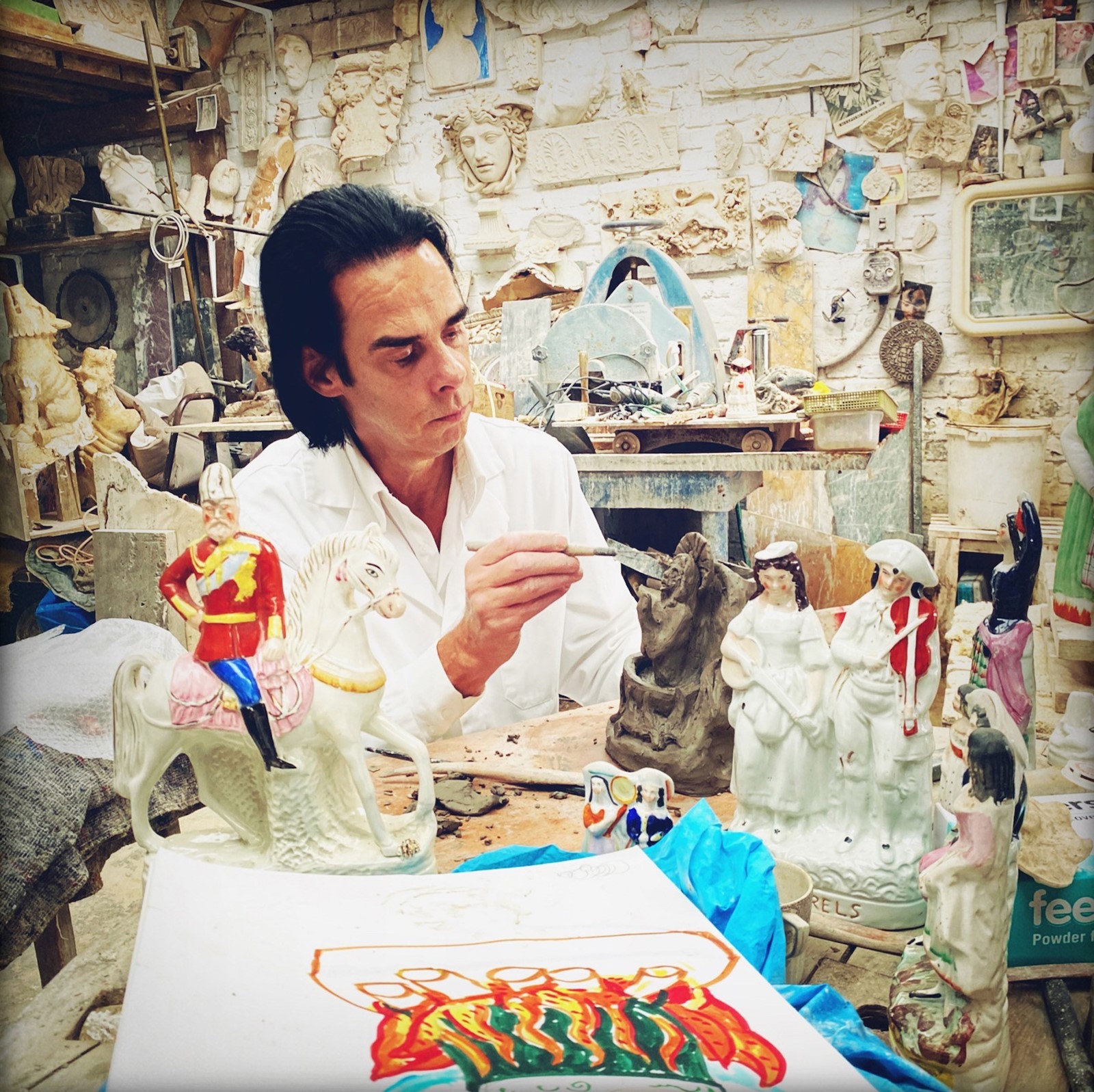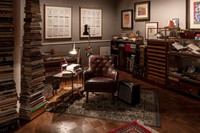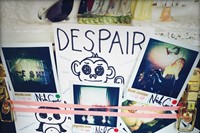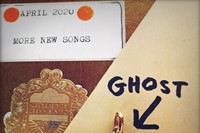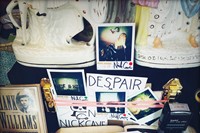“Words are good” – the mother of all understatements, given this is Nick Cave talking. “Words can pretty much do anything you want them to,” he says. In his songwriting, they can summon scenes of pitch-dark comedy and unfathomable grief with ease, when for anyone else words would fail them; delivering lines from crooked love songs that land with the romance of a Glasgow kiss. His storytelling is expansive, yet lean, his revelations are sacred, yet laced with acid wit. Even so, words aren’t everything, and Cave has always produced physical pieces in parallel to his lyrics. Not what he calls art as such, not since dropping out of art school. “But I always missed the making of things, you know, creating objects as my principal form of creativity. I have a very visual sensibility towards things. You can see that in the songs I write because I think I was always naturally a visual artist.”
His new record, The Seven Psalms, is a series of spoken word compositions, set to music made by Cave and Warren Ellis during the sessions for last year’s Carnage album. As an appeal to God for leniency, Cave wrote one of these holy poems every day for a week in lockdown. Together they form one long meditation on faith, rage, love, grief, mercy, sex, and praise, available to pre-order on 10” vinyl through Cave Things, a space for translating his overspill of ideas into bespoke items and ephemera. Sparked by the Stranger Than Kindness exhibit of over 300 found and handmade relics from his personal collection that launched in Copenhagen a couple of years ago, these objects, made and designed by Cave, reveal the artist’s creative world and visual sensibility in a way his books and recordings never could.
Made up of fragments from over 50 years of his career, the exhibition is a life’s journey measured out in things. Exploring his influences and obsessions by navigating real and imagined universes that document his development as an artist. Each is assembled from deeply intimate works and mementos, including some that have since been recreated for Cave Things, smashing the traditional merchandise model to bits in the same way that Stranger Than Kindness dismantles Cave’s backstory. “The thing I like about the exhibition is the accent on the notion of rupture – of life being a series of shatterings – where you step from one room to the next and everything changes, different rules apply, the physical and emotional sensation alters,” he says. “Life seems to be coming apart at the seams.”
As Stranger Than Kindness: The Nick Cave Exhibition reopens at the Galerie de la Maison du Festival in Montreal, Cave discusses how losing everything can set you free, finding strength in vulnerability, and the many sides to a song.
Ben Perdue: Does the way that Stranger Than Kindness reveals your inner world through personal objects make you feel vulnerable or laid bare in a way that your songwriting doesn’t?
Nick Cave: I’m not sure that anything makes me feel uncomfortably vulnerable, these days. I like the idea of a robust vulnerability. That seems to make sense to me – the notion that there is a certain power or strength that can be obtained from opening oneself to the world, or by laying things bare. The Stranger Than Kindness exhibition essentially shows the ‘how’ of things. Even the ‘why’. It is a deep dive into the creative process that, at least in my case, extends way beyond what is presented on an album, say, or between the pages of a book. The exhibition shows the highly visual or tactile nature of much of the stuff that I do. You get to see the interior workings – the gears grinding away – there is a vulnerability in that, which is the strength of the exhibition.
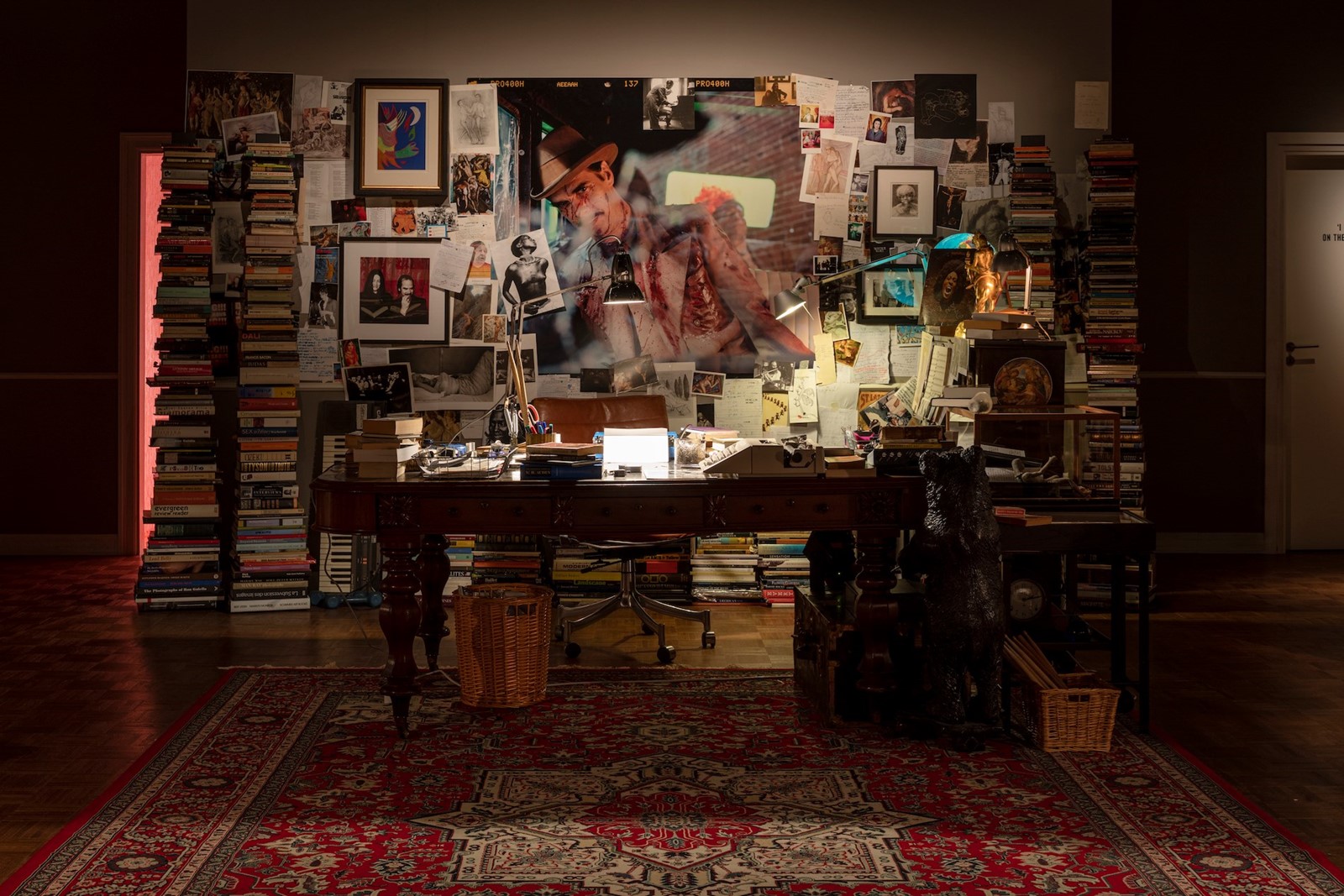
BP: Do you think your storytelling is most effective when told in different dimensions – manifested musically, through written words, and in objects?
NC: Well, for me, a song has many sides, many manifestations. This is caused by a kind of over-thinking or over-reaching that I have a tendency to do when I am swept away by an idea. It has forever been the case. So, I draw my songs, photograph them, write extra verses, do collages, draw maps of the town that the song is set in, and so on. I find all this peripheral work helps me form a kind of uncommon attachment to the song. I find I can enter deep inside the song.
BP: Which individual pieces in the exhibition hold the most meaning for you, and was it hard to hand them over? Do you get sentimental over physical things?
NC: Actually, one of the best and most healthy things I have done in recent years was to essentially give away my office to the exhibition – that is the desk, the chair, the bookshelves and the thousands of books, all the papers, notebooks, screenplays, pianos, paintings, filing cabinets etcetera. Almost overnight, I had nothing – just a pen and a new notebook. This felt like a great unburdening. A feeling of freedom. It changed the way I worked, made my whole relationship to my work more fluid, more flexible.
BP: Where does the influence of religious language and iconography that extends through your work into the exhibition and Cave Things stem from?
NC: My relationship to religion is an ongoing thing. I have lived my life in pursuit of an idea that remains tantalisingly close but difficult to fully embrace. I have come to realise that this religious questing is probably the religious experience itself. Indeed, I have always believed, just as I’ve always doubted. So, the heavy and relentless accent on religious imagery through almost all of my work is in itself part of the religious experience.
“I’m not sure that anything makes me feel uncomfortably vulnerable, these days. I like the idea of a robust vulnerability” – Nick Cave
BP: When did you first have the idea that later became Cave Things, and what items did you always envision it including your own assembled ephemera, photos, and fetishes?
NC: Through lockdown I decided to build an online shop. I wanted to take the idea of merchandise and do something completely different with it. Something that was confounding and subversive and playful and annoying. Cave Things freed me from certain expectations of how a singer should behave in the marketplace. It has provided a space to create things that could exist entirely as high quality, bespoke or limited-edition items. Assembled ephemera, fetishes are good words to describe some of the products.
BP: What was your process for writing Seven Psalms, and did you always set out to structure them in such a way that together they would create one longer meditation?
NC: Well, they were apocalyptic times we were living through, during the pandemic. I was reading the bible more than normal, I guess. I decided that I would write a psalm a day for a week, which I did – a psalm being, in this instance, a petition to God for clemency. Through the Carnage sessions with Warren I recorded spoken-word versions of the psalms and together Warren and I put music to them. I had no particular plans for them. Once again, they were just a general overspill of ideas. Put altogether, one after the other, the Seven Psalms suddenly became something of genuine substance. I put it out as a limited edition on Cave Things, which has provided me with the platform to do small, limited-edition runs of esoteric items.
BP: Is it important for you to have a hand in the actual making of some pieces in Cave Things? Connecting you and the final owner more tangibly?
NC: Absolutely. I would say that Cave Things is unique as a store where everything is made and designed by the artist. It was a strange idea, one of those weird things that lockdown permitted because suddenly I wasn’t touring all the time. Idle hands are the devil’s playthings!
Stranger Than Kindness: The Nick Cave Exhibition is open until 7 August, 2022 at Galerie de la Maison du Festival, Montreal.
